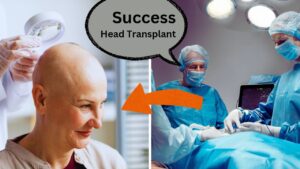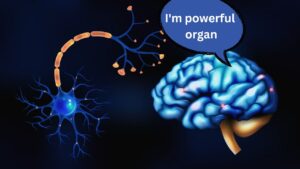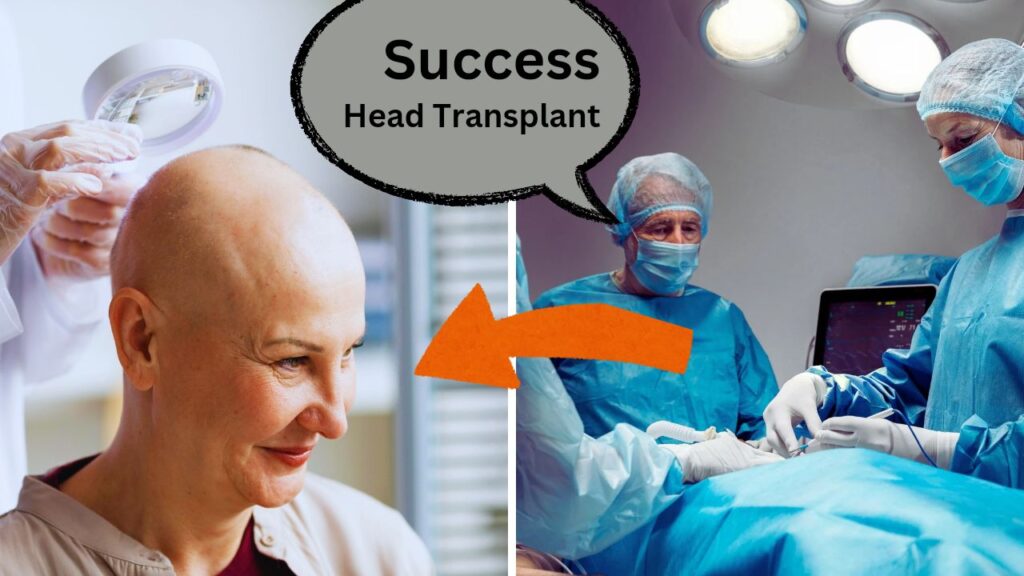INDRODUCTION
In the ever-evolving field of medical science, breakthrough achievements constantly reshape our understanding of what is possible. One of the most amazing and controversial achievements in recent history is the successful human head transplant. This unprecedented medical procedure has not only captured the public imagination but has given rise to numerous ethical and scientific controversies. In this article, we explore the details of this medical wonder, its mechanism, its implications and the future it heralds.
The Visionary Behind the Surgery
The idea of head transplants has long been the stuff of science fiction. However, it took a visionary surgeon, Dr. Sergio Canavero, to bring this idea from the realm of fantasy to reality. Dr. Canavero, an Italian neurosurgeon, announced his ambitious plan to perform the first human head transplant in 2015. His announcement was met with skepticism and controversy, but his resolve remained steadfast. The aim of the surgery was to give a new lease of life to patients with terminal illness or severe physical disability, providing them with a functional body free from illness.
The Groundbreaking Procedure
Head transplant surgery is an incredibly complicated and complex procedure that requires a multidisciplinary team of surgeons, neurologists and anesthetists. The process begins by cooling both the donor’s body and the recipient’s head to slow cell death and preserve neurological function. The next step involves carefully severing the spinal cords of both the donor and the recipient. This is arguably the most complex and challenging part of the surgery, as reattaching and reconnecting the complex network of spinal nerves is a critical task.
Once the heads are detached, the recipient’s head is carefully attached to the donor’s body. It connects vertebrae, muscles and blood vessels. Advanced techniques, such as the use of polyethylene glycol (PEG), help fuse the spinal cord and promote nerve regeneration. The final phase involves close monitoring and rehabilitation to ensure body acceptance of the new head and restoration of motor function.
The First Successful Transplant
The first successful human head transplant was performed in China, where Dr. Xiaoping Ren, a renowned surgeon, collaborated with Dr. Canavero. The recipient, Valery Spiridonov, a Russian computer scientist with Werdnig-Hoffmann disease, volunteered for the pioneering procedure. The surgery, which lasted over 36 hours, was a huge success. Spiridonov’s head was successfully attached to the donor organ, and after an extended period of recovery and rehabilitation, he recovered a significant degree of motor function and sensory perception.
Ethical and Scientific Implications
Although the success of head transplant surgery is a remarkable achievement, it has also ignited a firestorm of ethical and scientific controversy. One of the primary ethical concerns surrounds the identity and consciousness of the recipient. Does a head transplant result in a new person, or is it just a continuation of the recipient’s consciousness in a new body? This question touches on fundamental aspects of human identity and personality.
Furthermore, the procedure raises questions about consent and the emotional impact for both recipient and donor families. The idea of using a deceased donor’s body for such radical surgery is fraught with psychological and ethical complications. Additionally, there are concerns about the long-term efficacy of transplants and the potential for unexpected medical complications.
The Future of Head Transplant Surgery
Successful head transplantation ushered in a new era in medical science. This opens up possibilities for treating severe spinal cord injuries, muscular dystrophy and other debilitating conditions. With continued advances in medical technology and techniques, the feasibility and success rates of such surgeries are expected to improve.
Furthermore, the development of head transplant surgery has increased interest in related fields such as cryonics and brain preservation. The idea of saving a brain or entire head for future replacement or regeneration is no longer confined to science fiction. Researchers are exploring ways to perfect these techniques, potentially offering a form of immortality or extended lifespan.
Challenges and Considerations
Despite the groundbreaking nature of the head transplant, significant challenges remain. One of the foremost challenges is the reattachment and functional integration of the spinal cord. While techniques like PEG show promise, achieving complete and seamless nerve regeneration is still a formidable task. Continued research and experimentation are essential to overcome this hurdle.
Another consideration is the psychological impact on the recipient. Adjusting to a new body and coping with the profound changes can be mentally and emotionally taxing. Comprehensive psychological support and counseling are crucial components of post-surgery care.
Conclusion
The successful human head transplant is a testament to the relentless pursuit of medical innovation and the indomitable spirit of scientific exploration. While it represents a monumental leap forward, it also underscores the need for careful ethical considerations and robust scientific research. As we stand on the brink of a new frontier in medical science, the head transplant surgery serves as a beacon of hope for countless individuals suffering from incurable conditions, offering the promise of a better, healthier future.
The journey of head transplant surgery is far from over. As researchers and surgeons continue to push the boundaries of what is possible, the dream of overcoming some of the most challenging medical conditions inches closer to reality. In the end, the story of the first successful human head transplant is not just about a surgical procedure; it is about the relentless quest for knowledge, the courage to dream the impossible, and the hope that science can transform lives in ways we are only beginning to comprehend.

Weight Loss Exercises at Home

Healthy Lifestyle Tips: A Comprehensive Guide to Better Living

The Stark Reality of Work Depression and Death in India

The Milestone of Modern Medicine: The First Successful Human Head Transplant

How to Boost Your Brain Power: Proven Strategies for Mental Clarity and Focus

The Ultimate Guide to an Effective Skin Care Routine At Home

Weight Loss Exercises at Home
INTRODUCTION In today’s fast-paced world, finding time to go to the gym can be challenging. However, that doesn’t mean you can’t achieve your fitness

Healthy Lifestyle Tips: A Comprehensive Guide to Better Living
INTRODUCTION Living a healthy lifestyle is more than just a trend; it’s a commitment to improving your overall well-being and longevity. With the rise of

The Stark Reality of Work Depression and Death in India
INTRODUCTION Job depression is a silent epidemic that is sweeping many parts of the world and India is no exception. The modern work environment, economic

The Milestone of Modern Medicine: The First Successful Human Head Transplant
INDRODUCTION In the ever-evolving field of medical science, breakthrough achievements constantly reshape our understanding of what is possible. One of the most amazing and controversial

How to Boost Your Brain Power: Proven Strategies for Mental Clarity and Focus
INTRODUCTION In today’s fast-paced world, maintaining optimal brain health is more important than ever. Whether you’re a student cramming for exams, a professional juggling multiple

The Ultimate Guide to an Effective Skin Care Routine At Home
INDRODUCTION In the pursuit of glowing and healthy skin, an effective skin care routine is paramount. With the plethora of products and advice available, understanding

